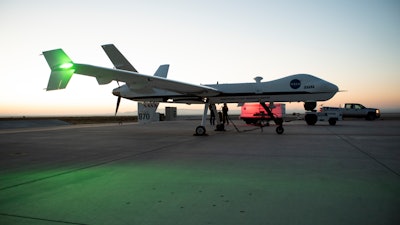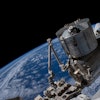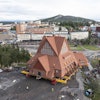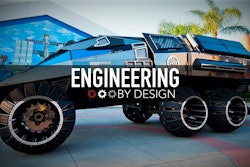
EDWARDS AIR FORCE BASE, Calif. (AP) — NASA has flown a large, remotely piloted aircraft equipped with detect-and-avoid technologies through the national airspace system for the first time without a safety chase plane following it (view photos in gallery).
NASA says Tuesday's flight over California moves the U.S. closer to normalizing unmanned aircraft operations in airspace used by commercial and private pilots.
The test used NASA's Ikhana, a non-military version of the Air Force's MQ-9 Predator B that is 36 feet (11 meters) long and has a 66-foot (20-meter) wingspan.
Controlled from Armstrong Flight Research Center on Edwards Air Force Base in the Mojave Desert, Ikhana flew west into Class A airspace where airliners fly, north to Fresno and south through Class E general aviation airspace, including an approach to Victorville airport.
The flight required transfers among air traffic control facilities.






















